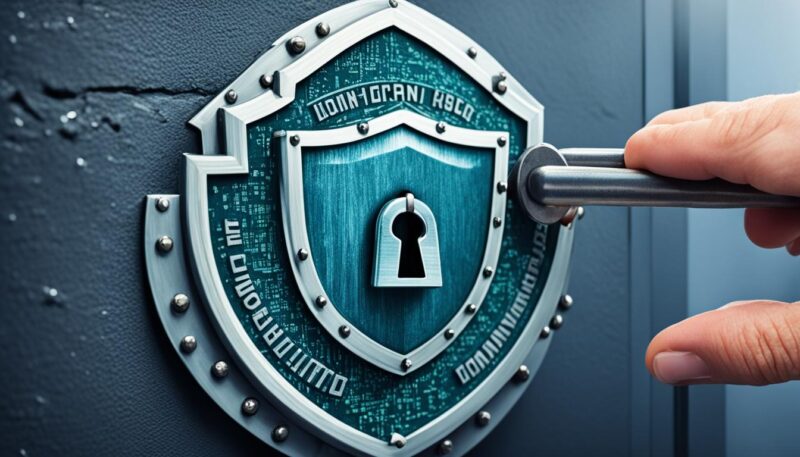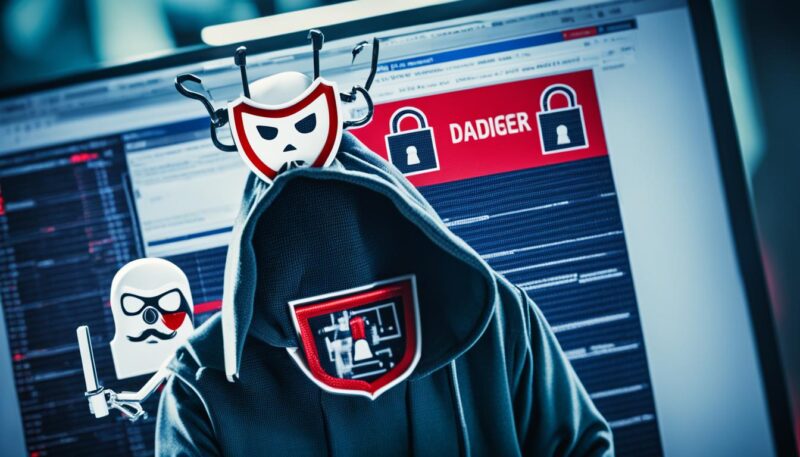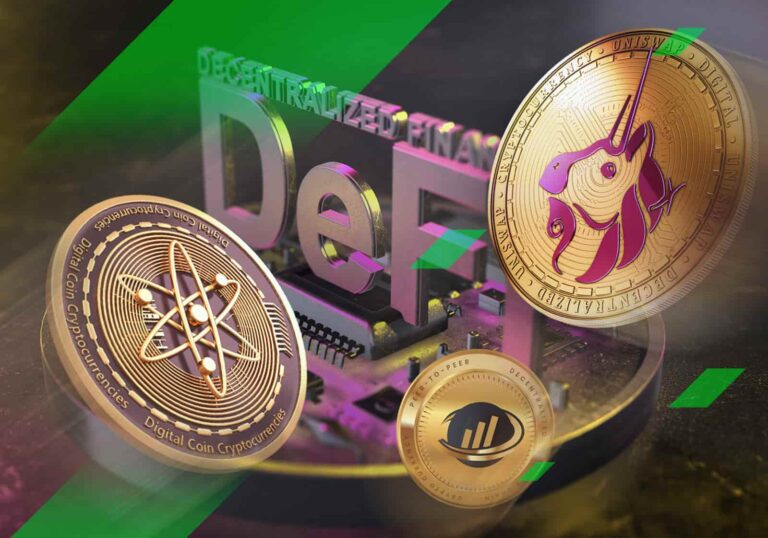Imagine waking up one morning to find that your online business, which you’ve painstakingly built over the years, has been compromised. Your domain name, the cornerstone of your digital identity, is no longer under your control. The panic and helplessness that ensue are not just about financial losses or reputational damage, but about the violation of something deeply personal—the trust and effort you’ve poured into your venture. This scenario highlights the reality of domain hijacking, a growing threat in the realm of cybersecurity.
Key Takeaways
- Understanding the critical importance of domain security can protect your online presence.
- Domain hijacking involves unauthorized changes to a domain’s registration, often with severe consequences.
- Identifying domain hijacking risks early can help in avoiding substantial financial and reputational damage.
- Comprehensive knowledge of the DNS system and its vulnerabilities is vital for effective domain protection measures.
- Implementing robust domain protection measures can significantly reduce the risk of domain security breaches.
- Effective recovery strategies are essential for mitigating the damage caused by domain hijacking incidents.
Understanding Domain Hijacking and Its Impacts
Domain hijacking is a severe cybersecurity threat where control over a domain name is seized unlawfully. Such a breach can cause immense disruptions, from redirecting web traffic to misusing email for nefarious purposes. Furthermore, domain theft often results in significant issues for businesses, akin to domain spoofing which involves creating deceptive mirror websites.
Definition and Effects
Domain hijacking occurs through various methods, including exploiting weak passwords, phishing, and capitalizing on expired domain registrations. This type of attack not only threatens cybersecurity but also exposes businesses to financial damages due to domain hijacking. Effective cybersecurity efforts are crucial to preventing such incidents and protecting sensitive digital assets.
Consequences of Domain Hijacking
The ramifications of domain hijacking are profound. Companies may face severe financial losses, alongside reputational damages that can erode customer trust. Additionally, failing to secure domains can lead to regulatory damages, as businesses may breach compliance requirements. These consequences clearly highlight the importance of robust domain management and proactive cybersecurity measures to mitigate risks.
How Domain Hijacking Works
Understanding how domain hijacking works is pivotal for safeguarding against these malicious acts. Domain hijackers often exploit security weaknesses or utilize social engineering attacks to commandeer domains.
Common Methods of Hijacking
Several common methods allow unauthorized access to domains. These include:
- Impersonation, where attackers pose as the legitimate domain owner to deceive registrars.
- Phishing attacks designed to trick domain owners into revealing sensitive information.
- Registrar access abuse, exploiting vulnerabilities in registrar systems to gain control.
- Manipulation of domain transfers, using stolen credentials to move domains illicitly.
Protecting your domain requires vigilance against these prevalent threats. Effective domain access control and domain registration safety practices are fundamental to thwarting hijackers.
Vulnerability Exploit Techniques
Domain hijackers utilize various vulnerability exploit techniques to breach security defenses. Such techniques include:
- Acquiring personal information for impersonation purposes.
- Using keyloggers to capture login credentials covertly.
- Social engineering attacks tailored to extract confidential data.
Reverse domain hijacking, where fraudulent claims are made to seize a domain, also poses a significant threat.

Implementing strong domain access control measures and educating oneself on the perils of phishing attacks are crucial steps in protecting your domain. Maintaining domain registration safety and understanding common exploits ensure effective mitigation against hijacking risks.
What is Domain Hijacking? Identifying and Avoiding Risks
Domain hijacking is a critical issue that can affect individuals and businesses alike. Implementing comprehensive domain hijacking prevention controls ensures a robust defense against this threat. Understanding how to safeguard your domains and what to do if a hijacking occurs is essential. Below are key measures and strategies for both preventing and recovering from domain hijacking.
Preventive Measures Against Domain Hijacking
Preventing domain hijacking starts with selecting a reputable registrar company. Reliable registrars offer features designed for securing domain names, such as two-factor authentication (2FA) and domain and account lock options. It’s crucial to enable these features to add extra layers of security.
Using a strong password checklist is another vital component. Strong passwords that are regularly updated minimize vulnerability to unauthorized access. Additionally, WHOIS protection can obscure your contact details, reducing the risk of third-party risks and unsolicited contact attempts.
Here are some recommended steps for domain hijacking prevention:
- Choose a reputable domain registrar
- Enable two-factor authentication
- Activate domain and account lock features
- Utilize WHOIS protection
- Implement a strong password checklist
- Opt for auto-renewal to prevent lapses
- Keep contact details updated
Recovery from Domain Hijacking
Even with stringent measures, domain hijacking can still occur. If faced with this, swift action is necessary. Recovery may depend on the registrar’s ability to reverse unauthorized actions or might require legal attention involving domain name disputes. Prompt communication with the registrar often helps in the initial stages of recovery.
Securing the domain post-recovery involves advocating through ICANN policies and potentially resorting to court orders if necessary. Ensuring domain hijacking is recognized and acted upon as an illegal practice is imperative.
Below is a comparative table of preventive and recovery measures:
| Preventive Measure | Recovery Strategy |
|---|---|
| Reputable Registrar Selection | Contact Registrar Immediately |
| Two-Factor Authentication | Report to ICANN |
| Domain and Account Lock | Pursue Legal Action |
| WHOIS protection | Advocate with ICANN Policies |
| Strong Password Checklist | Seek Court Orders if Necessary |
| Auto-Renewal | Follow-up for Policy Updates |
| Updated Contact Details | Ensure Domain is Recognized as Yours |
Conclusion
Domain hijacking represents a formidable threat with severe impacts on businesses. Without proper precautions, the business may face significant disruptions, financial losses, and damage to reputation. Therefore, a clear understanding of domain security risks and the methodologies employed by hijackers is essential for any organization.
Adhering to domain management best practices is an effective approach to fortifying defense mechanisms against potential hijackers. This includes implementing strong authentication measures like two-factor authentication (2FA), selecting a reliable domain registrar, and ensuring continuous training for key personnel in identifying domain hijacking threats. Additionally, regular audits and updates to security protocols are vital components of risk management for domains.
In the unfortunate event of a domain compromise, a swift and informed response is necessary to mitigate the damage. Collaborating closely with the domain registrar and legal authorities can expedite the recovery process and help regain control of the compromised domain. Ultimately, protecting your domain is not just a technical requirement but a fundamental aspect of contemporary cybersecurity strategy, ensuring the resilience and integrity of your digital assets.
Source Links
- https://www.upguard.com/blog/domain-hijacking
- https://securityscorecard.com/blog/what-is-domain-hijacking-and-how-do-i-prevent-it/
- https://www.uptimia.com/learn/domain-hijacking-and-how-to-avoid-it
Related Posts:
- Are DLL Files Dangerous? Identifying Safe vs. Malicious DLLs
- Best Practices for Securing Your PC and Avoiding Malware
- How Data Security Protects Nursing Home Residents:…
- How Your Environment Can Affect Your Willingness to…
- Understanding Lift and Shift and If It’s Right For You
- Do's and Don'ts of Fixing Your Car's Electronics —…








